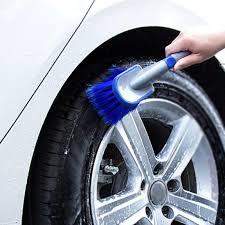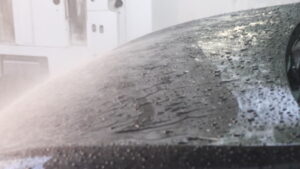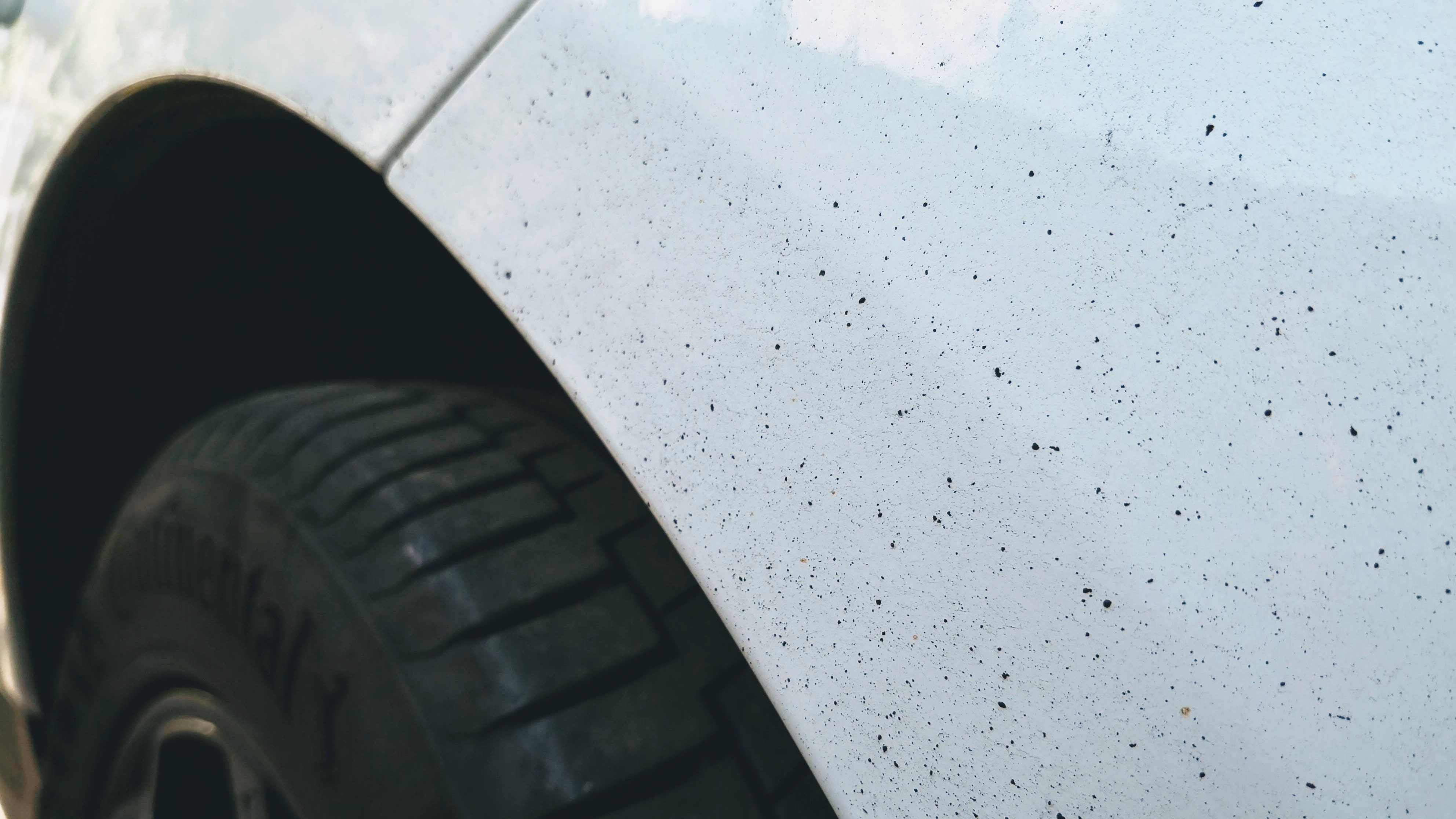Washing your car is a great way to spend your time, giving you the chance to check every last detail of your vehicle – the only way to know what condition your car is in and of course the result is always worth it!
Washing a car is also often done incorrectly – this can result in either not getting the car really clean, or in damaging the car’s paintwork, which can result in the car fading and losing its appearance over several washes.
In order to have a quality and safe car wash, it would be wise to follow certain tips that will prevent damage to the varnish and, of course, most importantly, give a better result! Below we set out the different points to consider.
Car cleaning products
Laundry starts with the choice of tools. The right tools also ensure safer washing – so make sure you choose the right sponge, cloth, shampoo and brush for the job.
It is essential that you do not use sponges or cloths designed for domestic cleaning to wash your car. The performance of household flaps is designed to repel surface dirt, but washing the car would mean immediate damage. Sand particles, dust and other dirt on the body of the car will eat away at the paintwork, creating scratches that are already more serious paint damage and require polishing to remove. Sponges and cloths designed for washing cars soak up dirt and only release it in the rinse bucket when in contact with water.
Car shampoo
The most common mistake made when washing a car is to use dishwashing detergent. Why is this a mistake? – Because dishwashing detergents contain very high levels of abrasives. Other household soaps or detergents should also not be used, as they are usually too alkaline or acidic for car washing. This damages the surface and also removes the protective car wax.
The best and safest result is achieved by using shampoos specially formulated for car washing, which have a neutral pH and contain anti-stick agents that help the dirt to slide off the surface without damaging it. It is also possible to use “Nano Shampoo”, which has a very high wax content and perfectly refreshes the water-repellent protective layer of the waxed car. You can get a better overview of car chemistry here.
Accessories needed
For a quality car wash, you need a range of different accessories. Be sure to bring several washcloths, a drying cloth, detergent and 2 buckets. If you are also planning to wax or polish, you will also need wax and polishing tools and accessories.
List of accessories you need:
- Car wash glove, Car wash svamm- for body washing;
- Washing brush – For washing tyres and floor mats;
- Washing buckets – one for shampoo water and one for clean water;
- Car shampoo;
- Wheel cleaner;
- Drying towel made of chamois or microfibre;
- Compressor – for compressed air drying (possibly for crack drying);
- Pitch remover;
- Insect remover;
- High speed wax/ Permanent wax/ Nano-protection (For more in-depth work)
- Polishers (Especially for thorough work)
Car washing
A well known basic principle of washing is to keep the car wet throughout the wash. This is important to avoid leaving ugly water-drying stains on the car that are difficult to remove later. To prevent the car from displaying too quickly, choose a shady place to wash it and make sure you don’t leave any windows open during the wash ;)
1. Start washing your car from the Pigileot!
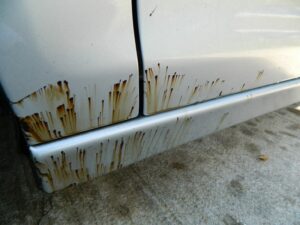
It makes the most sense to start the wash with a piggyback, as the product works many times faster and more effectively on a dry car than on a wet one. To soak the pitch, it is recommended to use the most neutral pitch remover “Winter Wash” – It is safe for seals, chrome parts and number plates!
1. Spray the car together with a paint remover. The sides of the car don’t need to be soaked above the door handles and the back of the car needs to be covered with the chemical up to the highest edge – there’s still plenty of pitch ;) The bonnet and the nose of the car don’t need to be soaked either.
2. Allow to act for 3-5 minutes and if necessary add a second coat of pigmentation as in 1. as described in the section and let it run for another 3 minutes.
3. Use a pressure washer to wash off the pitch that has been soaked off the car. Apply pressure to the surfaces piece by piece, starting from the bottom edge. In case you start rinsing from the top, you can rinse off the pigging agent so that the pitch still remains on the surface.
2. Now give the car a normal soak!
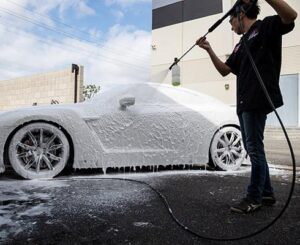
After the pitch has been removed, a few pinpricks may remain on the car, which will be removed after drying.
1. After removing the pigments, soak the car in the car wash and leave for 3 minutes. (DELTA FORCE 2000)
(1.1) In the meantime, use a brush to clean the tyres and floor mats
2. Press the car down from the top to wash off any loose dirt and grains of sand.
3. Give the tyres, rims and wheel wells a good squeeze too.
3. WASHING THE RIMS
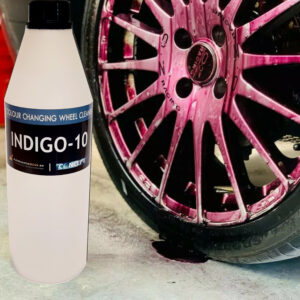
The rims are the dirtiest part of the car, and it is therefore important that any major dirt is thoroughly removed from the corners during the pressing process. Now, get down to a deeper wash.
1. Apply wheel cleaner to the rim and allow it to work as directed.
2. Use a brush or a separate sponge to give the rims a thorough clean.
3. Rinse the rims.
Starting the wash at the rims prevents dirt from the rims from getting on the clean body parts later. If your car wheels are very dirty, it’s a good idea to use a brush to wash them. For cleaner rims, you can use a separate wash pad or swab of the same type as for the car body. To avoid damage to your car’s bodywork, make sure you don’t use the same cleaning products on your car as you used to wash your wheels.
4. Wet the car again with water
After washing the rims, it’s time to wash the bodywork. Before you get to it, wet the car again with water to soften the dirt that has dried on the car. You don’t need to use heavy pressure, just a light rinse.
5. Wash your car in a well-planned sequence
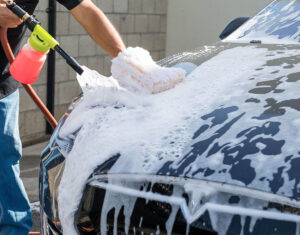
6. Also clean the tool during the washing process
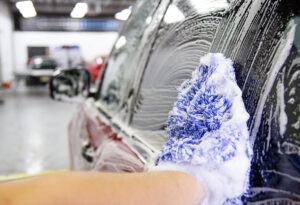
Start by mixing a sponge or a wash mitt with shampoo water to wash the unwashed part of the body. Rinse the tool in a bucket of clean water every few minutes. This will help to rinse off excess dirt from the swab or washcloth so that it doesn’t inadvertently damage the car. After rinsing, dip again in the shampoo water and wash the next detail.
7. Avoid drying spots when rinsing your car
Once the detail has been swabbed, rinse it clean with clean water to prevent the shampoo from drying on the surface of the vehicle. It dries on the surface in a nasty way and is much harder to remove later.
8. DON’T LET THE CAR DRY OUT IN THE WASH
Avoid drying out the car and if it takes longer than expected to wash the car with shampoo and a sponge, don’t forget to let the car get wet in the meantime. Otherwise, washing the dried surface with a sponge will leave scratches on your car’s surface and the varnish will fade.
9. Drying the car
Only start drying your car once the entire car has been washed and rinsed. For drying, it is best to use an absorbent chamois cloth to remove 90% of the water and large microfibre drying sheets for finishing. If you use only microfibre cloths, you should be aware that the cloths will get wet during the drying process and you will need to stock up on several pieces.
When drying, pay particular attention to door handles, number plates, side mirrors and other similar places where water can drip.
A compressed-air compressor (if available) can be used to clean tricky areas. The compressor makes it easy to let water out of hidden gaps and dry instantly with a microfibre.
10. Car waxing and polishing
If you’ve been taking a more thorough care of your car and are planning to treat it with a protective coating or even get rid of scratches and polish it – now is the time to do it.
The use of wax or nano-protection gives the car a protective layer that keeps it more protected from scratches and also keeps surfaces cleaner. As an added bonus, the protective coating also gives the surface a deeper shine.
If the car is scratched and does not shine enough, a polish is applied before the protective coating is applied.
* Polishing differs from waxing in that it uses an abrasive paste to sand down the varnish – so there are no more scratches and the car shines like new!
* Waxing is a soft protection that creates a thin protective layer on the car when lubricated, but it does not remove scratches.
* Nano-protection provides a hard and durable chemical-resistant protective layer on the car’s surface, but does not remove scratches.
How often should you wash your car?
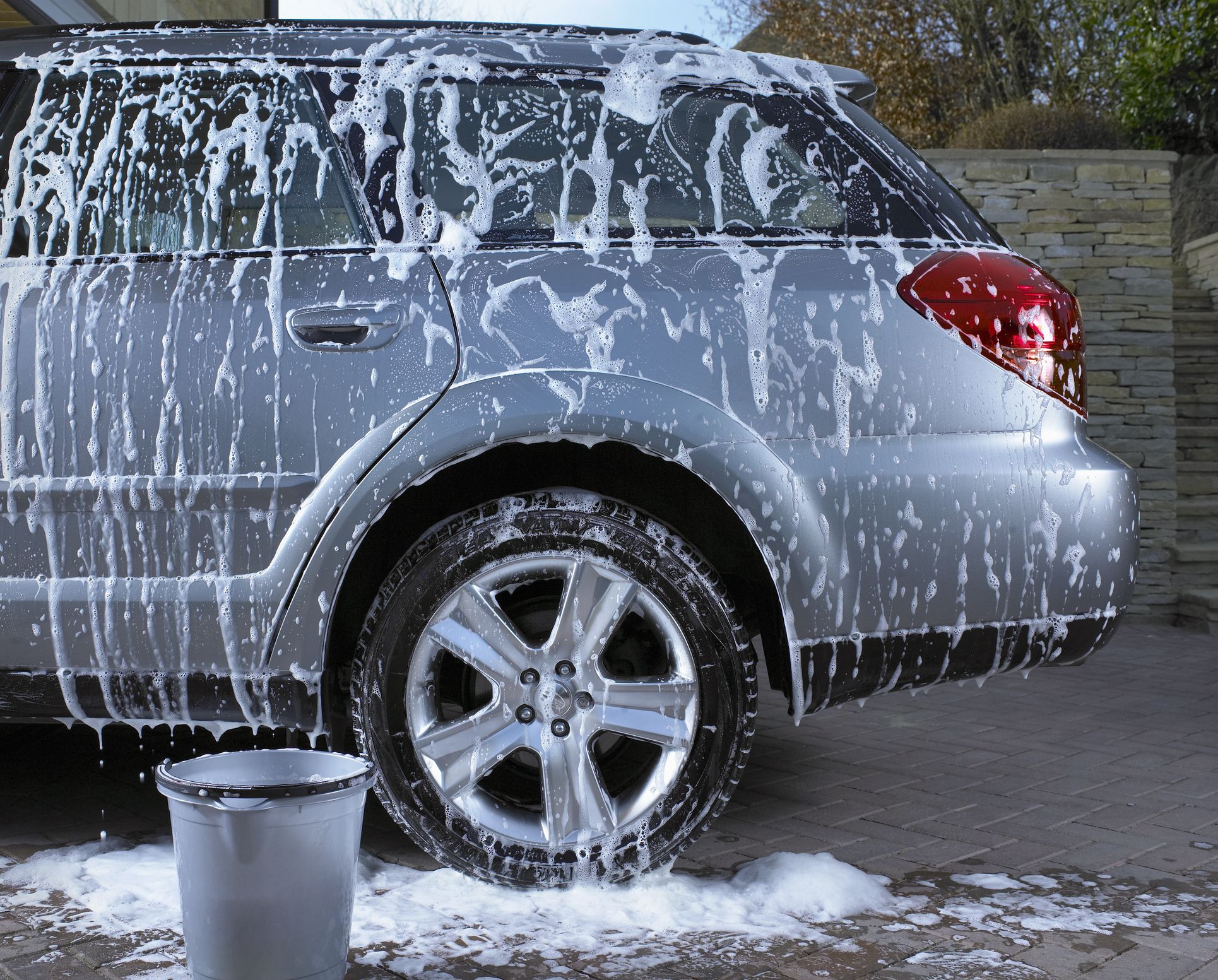
Washing and the frequency of washing is certainly not fixed and depends on many different factors such as the route of the journey, the frequency of journeys, the parking spaces chosen, etc… So the frequency of washing is still needs-based and different for each individual.
NB !! YOU SHOULD DEFINITELY WASH YOUR CAR IF YOUR CAR HAS:
- Insect remains on the bonnet and nose: Insect carcasses look very bad on the car and, worst of all, they corrode the paintwork. So in the warmer season, when insects are more abundant, it’s worth following carefully. (There is a separate autochemistry for easy removal of insects: INSECT REMOVER).
- Bird droppings: those who have been exposed know! In hot weather and in direct sunlight, they dry very quickly on the car, leaving an ugly stain on the varnish. If they do occur, it’s not worth waiting and it’s a good idea to wash them off as soon as possible. Bird droppings etch an ugly stain into the paint in a very short time. If staining has already occurred, the surface should be polished.
- Tree sap and sap: If the parking spot where you usually park your car is under a tree, you should choose a new spot if possible, as tree sap can also start to corrode the varnish, and tree sap will also stick to the car, along with tree sap, which is not easily removed by normal washing. If the situation has already arisen it would be wise to carry out clay treatment with Auto Cleaning Clay.
- Winter salt on the roads: in Estonia, salt is used to keep the roads in good condition during the winter, which does cars no good. During the winter, it’s still worth rinsing your car regularly, and make sure to protect it with a protective coating.
- WINTER PITCH???: Yes! Just the winter pitch! Cars pick up 90% more pitch on their bodies in winter than in summer. Studded tyres scrape up small specks that get stuck to the car’s surface. It’s still worth keeping an eye on it during the winter and a thorough full squeeze in the spring. Read more about pitch removal HERE!
WINTER PIGGY BANKS



